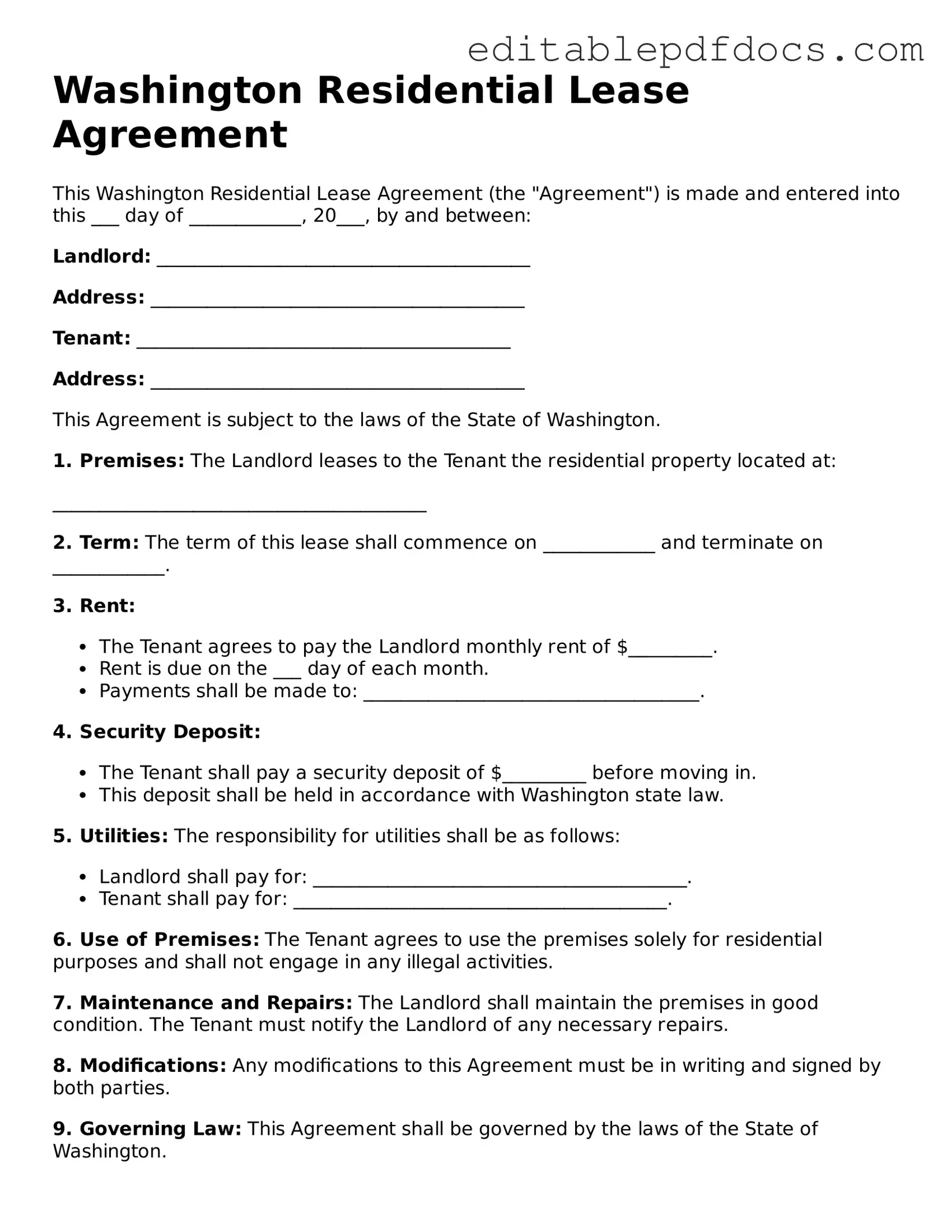Residential Lease Agreement Document for Washington
The Washington Residential Lease Agreement is a legally binding document that outlines the terms and conditions between a landlord and tenant for renting residential property in Washington State. This form serves to protect the rights of both parties while detailing important aspects such as rent, security deposits, and maintenance responsibilities. For a smooth leasing experience, consider filling out the form by clicking the button below.
Open Editor Now
